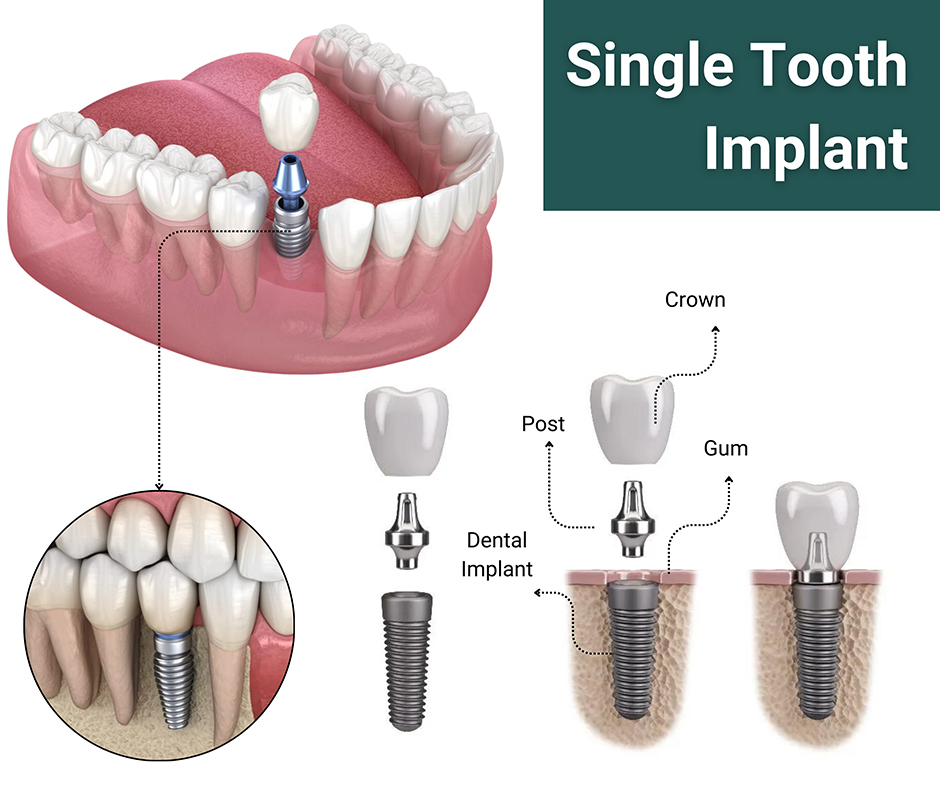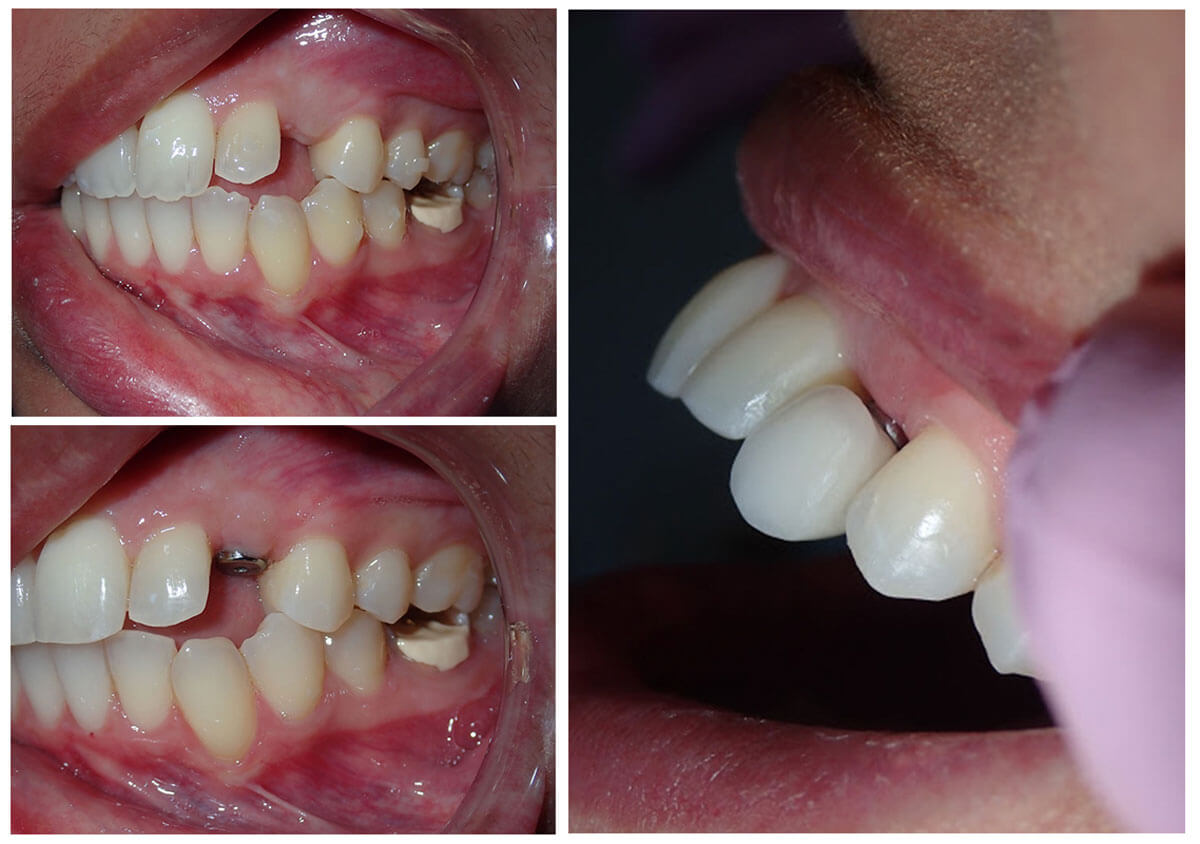The 20-Second Trick For Dental Implants
The 20-Second Trick For Dental Implants
Blog Article
The Ultimate Guide To Dental Implants
Table of ContentsWhat Does Dental Implants Mean?Dental Implants for BeginnersSome Known Facts About Dental Implants.The Single Strategy To Use For Dental Implants
are clinical devices surgically dental implanted right into the jaw to bring back an individual's ability to chew or their appearance. They give support for synthetic (phony) teeth, such as crowns, bridges, or dentures. When a tooth is shed due to injury or disease, a person can experience difficulties such as rapid bone loss, defective speech, or modifications to eating patterns that cause pain.
Structure of The Oral Implant System choosing dental implants, talk to your oral service provider regarding the potential advantages and threats, and whether you are a prospect for the procedure. Points to consider: Your general health and wellness is an essential consider establishing whether you are a great candidate for oral implants, how much time it will certainly require to recover, and exactly how long the dental implant may remain in place.
Smoking cigarettes may impact the recovery process and lower the long-term success of the dental implant. The recovery process for the dental implant body might take a number of months or longer, throughout which time you normally have a temporary abutment instead of the tooth. the dental implant procedure: Very carefully adhere to the dental health instructions provided to you by your oral company.
Some Known Questions About Dental Implants.
Implant failing can lead to the requirement for an additional procedure to deal with or change the dental implant system. Recovers the capacity to eat Recovers aesthetic look Aids keep the jawbone from shrinking due to bone loss Protects the wellness of the bordering bone and gum tissues Helps keep surrounding (neighboring) teeth secure Boosts high quality of life Damage to surrounding natural teeth during dental implant placement Injury to the surrounding tissues throughout surgery, such as sinus perforation Injury during surgical procedure (as an example, crack of surrounding jawbone) Inadequate feature, such as seeming like the teeth do not bite together normally An experience that the tooth hangs or turning in area arising from an abutment screw loosening up Implant body failing (looseness of the implant body) due to systemic infection, which might be a lot more likely in patients with unchecked diabetes mellitus because of local infection in bone and gum tissues sustaining the implant body as a result of postponed healing, which might be more probable in people who smoke Difficulty cleansing the gum tissues around the implant, resulting in poor dental health Without treatment gum illness Post-surgical pins and needles because of nerve impingement or damage Always inform health and important site wellness care suppliers and imaging specialists that you have dental implants before any magnetic vibration imaging (MRI) or x-ray procedures.
FDA is not knowledgeable about any type of damaging occasions reported for MRI or x-ray treatments with dental implants. Oral implants systems are normally made of products that follow international agreement requirements of the International Company for Standardization (ISO) or ASTM International. These standards have information of what makes a secure material.
Various other products such as gold alloys, cobalt-based alloys, titanium alloys, or ceramic materials are in some cases made use of. The safety accounts of these products are well-known. Oral dental implant systems are examined according to worldwide consensus criteria. Biocompatibility screening, to reveal that physical call with the tool does not create complications like inflammation or sensitive response, is component of the examination that aids ensure the materials in the dental implant system are safe and do not cause unfavorable impacts when implanted in people.

Dental Implants - The Facts
Some people are not eligible for oral implant surgical procedure. It is for dental doctors to operate individuals with: intense illnessuncontrollable metabolic diseasebone or soft tissue disease or infectionIf these problems are settled, a person can have the surgical procedure. Dental Implants. In, dental doctors avoid operating individuals with: If individuals with any of the above undergo oral implant surgery, there is a greater threat of the dental implant falling short
Some individuals the original source have a jawbone abnormality that avoids sufficient bone for an implant from establishing. In such situations, a specialist may need to carry out a ridge modification. This involves lifting the gum to reveal the location of deformed bone. The surgeon will certainly then use a bone or bone substitute to fix and accumulate the area.
Oral implant surgical procedure is an individualized process. Provide you time to recover. Connect the blog post and final crown, bridge or denture.
Next, your specialist will meticulously place the dental implant into your jaw. If your dental implant is near the front of your mouth, your dental practitioner will certainly make a short-term tooth for you to wear until you heal.
An Unbiased View of Dental Implants
Throughout the recovery phase, your jawbone ought to fuse to the dental implant. This process can take anywhere from 3 to 9 months.
When your dental implant heals, your dental practitioner can affix the joint (little connector blog post) and have a peek at these guys your final restoration (crown, bridge or denture). This generally takes concerning one hour to complete and may call for a second minor surgical procedure. You should not feel any type of discomfort during your oral implant treatment because your company will certainly use medication to numb your gum tissues.
Report this page